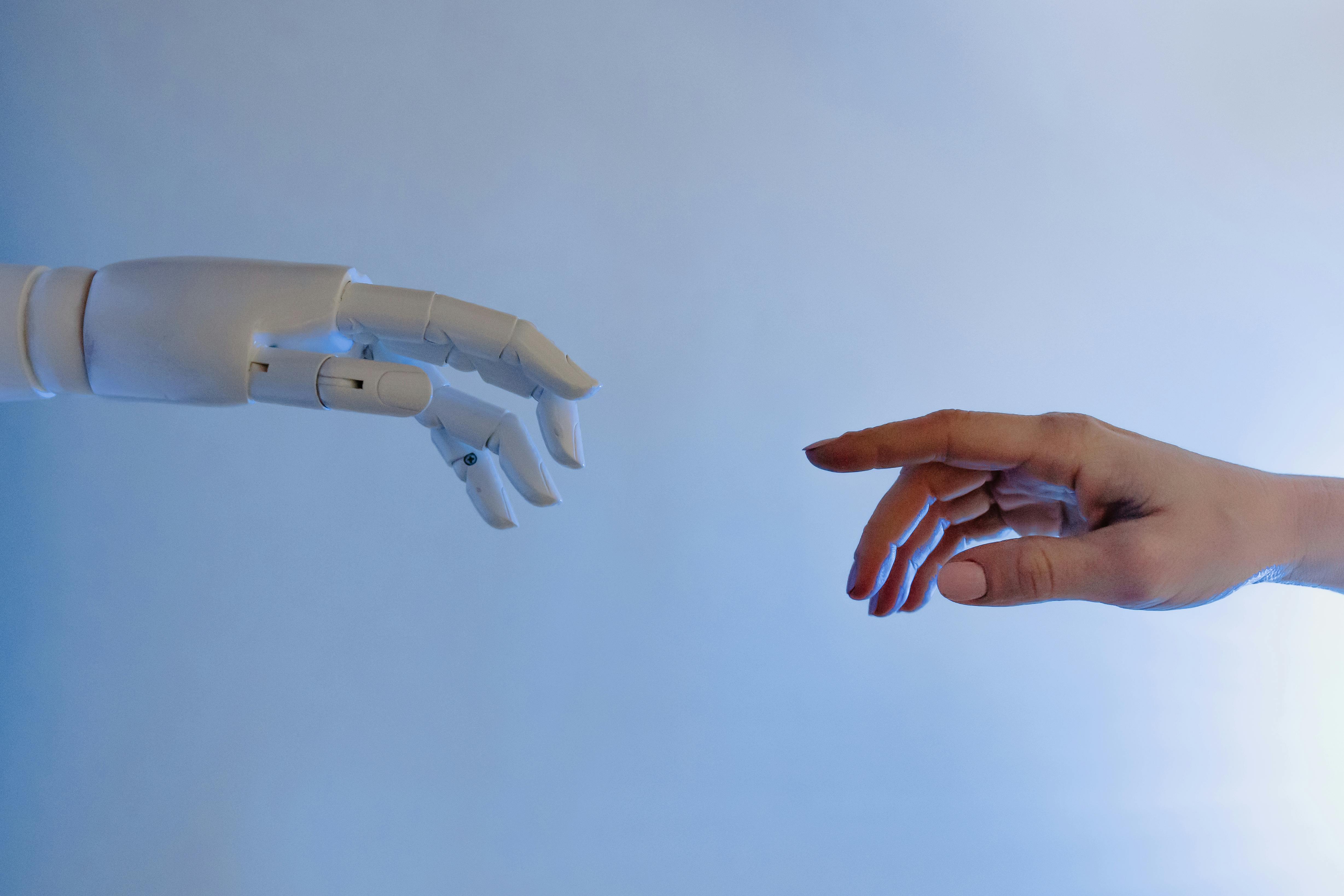
Natural Language Processing (NLP) has undergone a transformation so dramatic that it challenges our fundamental understanding of language, communication, and intelligence itself. In less than a decade, we've witnessed AI systems evolve from basic pattern matching to sophisticated language understanding that rivals human comprehension. This revolution is not just changing how we interact with machines—it's reshaping entire industries and opening possibilities we could barely imagine just years ago.
The Historical Foundation: From Rules to Learning
To appreciate the magnitude of today's NLP revolution, we must first understand where we began. Early natural language processing systems of the 1960s and 1970s relied heavily on handcrafted rules and symbolic reasoning. These systems, while groundbreaking for their time, were brittle and limited in scope. They could parse simple sentences and answer basic questions, but they struggled with the ambiguity, context, and nuance that make human language so rich and complex.
The 1980s and 1990s saw the introduction of statistical methods that began to capture some of the probabilistic nature of language. Hidden Markov Models, n-gram language models, and early machine learning approaches started to show promise, but they still fell far short of human-level language understanding. These systems could perform specific tasks like spell checking or basic translation, but they lacked the flexibility and generalization that characterize human language use.
The breakthrough came with the advent of neural networks and, more specifically, the development of word embeddings in the 2000s and 2010s. Word2Vec, GloVe, and similar approaches demonstrated that words could be represented as dense vectors in high-dimensional space, capturing semantic relationships in ways that traditional symbolic approaches never could. This was the first hint of the revolution to come.
The Transformer Revolution: Attention Changes Everything
The publication of "Attention Is All You Need" in 2017 marked the beginning of the modern NLP era. The transformer architecture introduced by Vaswani et al. solved many of the fundamental limitations that had plagued previous neural network approaches to language processing. Unlike recurrent neural networks, which processed text sequentially and struggled with long-range dependencies, transformers could process entire sequences in parallel while maintaining sophisticated attention mechanisms.
The attention mechanism itself was revolutionary. Instead of trying to compress an entire sentence into a fixed-size representation, transformers could dynamically focus on different parts of the input sequence when generating each output token. This allowed for much more nuanced understanding of context, reference resolution, and semantic relationships.
But perhaps even more importantly, transformers scaled remarkably well. As researchers added more parameters, more data, and more computational resources, performance continued to improve in predictable ways. This scalability opened the door to the large language models that would define the next phase of the NLP revolution.
The Era of Large Language Models
GPT and the Birth of Generative Pre-training
OpenAI's GPT (Generative Pre-trained Transformer) series demonstrated the power of large-scale pre-training on unlabeled text data. GPT-1, released in 2018, showed that a transformer trained on a large corpus of text could learn to generate coherent paragraphs and perform various language tasks with minimal fine-tuning. GPT-2, with its 1.5 billion parameters, was so capable that OpenAI initially withheld its release due to concerns about misuse.
Then came GPT-3 in 2020, with 175 billion parameters and performance that stunned even seasoned AI researchers. GPT-3 could write essays, code programs, compose poetry, and engage in sophisticated conversations with minimal prompting. It demonstrated "few-shot learning"—the ability to adapt to new tasks with just a few examples—that seemed to bridge the gap between narrow AI and more general intelligence.
But GPT-3 was just the beginning. GPT-4, released in 2023, showed even more sophisticated reasoning abilities, better factual accuracy, and more nuanced understanding of context and intent. These models demonstrated that scaling up transformer architectures with high-quality training data could lead to emergent capabilities that weren't explicitly programmed into the systems.
Beyond OpenAI: The Democratization of Large Language Models
While OpenAI pioneered many of the key techniques, the NLP revolution has been driven by contributions from researchers and organizations worldwide. Google's BERT (Bidirectional Encoder Representations from Transformers) showed the power of bidirectional pre-training, leading to significant improvements in understanding tasks. T5 (Text-to-Text Transfer Transformer) demonstrated that all NLP tasks could be formulated as text generation problems.
Meta's LLaMA models, Anthropic's Claude, and numerous open-source alternatives have democratized access to sophisticated language models. This proliferation has accelerated innovation and made advanced NLP capabilities available to researchers, startups, and developers who don't have the resources of major tech companies.
Technical Breakthroughs Driving the Revolution
Scaling Laws and Emergent Abilities
One of the most remarkable discoveries in modern NLP research is the existence of scaling laws—predictable relationships between model size, training data, compute resources, and performance. These laws suggest that we can continue to improve language model performance by simply scaling up along these dimensions, though with diminishing returns.
Even more intriguing is the emergence of capabilities that weren't explicitly trained for. Large language models exhibit abilities like arithmetic reasoning, code generation, and even some forms of common-sense reasoning that emerge naturally from the training process. This suggests that language modeling at scale captures deep patterns about the world that extend far beyond mere text manipulation.
In-Context Learning and Few-Shot Adaptation
Modern large language models have demonstrated remarkable abilities to learn new tasks from just a few examples provided in the input prompt. This "in-context learning" represents a fundamental shift from traditional machine learning, where models needed to be explicitly trained on specific tasks.
Instead of fine-tuning model parameters for each new task, users can simply provide examples of the desired behavior in the prompt, and the model adapts its responses accordingly. This has made language models incredibly versatile tools that can be applied to new problems without requiring specialized training data or computational resources.
Instruction Following and Human Feedback
Recent advances in training language models to follow instructions have been crucial for their practical deployment. Techniques like reinforcement learning from human feedback (RLHF) have allowed researchers to align model outputs with human preferences and intentions, making them safer and more useful for real-world applications.
These instruction-following models can understand complex, multi-step requests and break them down into manageable components. They can engage in back-and-forth conversations, ask clarifying questions, and adapt their communication style to match user preferences.
Real-World Applications Transforming Industries
Content Creation and Media
The media and content creation industries have been among the first to feel the impact of the NLP revolution. Language models can now generate high-quality articles, marketing copy, social media posts, and even creative fiction with minimal human input. This has led to new workflows where human creators work alongside AI tools to produce content at unprecedented scale and speed.
News organizations are using AI to generate initial drafts of routine stories, allowing human journalists to focus on investigation and analysis. Marketing teams are leveraging language models to create personalized content for different audiences and channels. Even Hollywood is experimenting with AI-assisted screenwriting and story development.
Customer Service and Support
Customer service has been revolutionized by sophisticated chatbots and virtual assistants powered by large language models. These systems can understand customer queries in natural language, access relevant information from knowledge bases, and provide helpful responses in real-time. They can handle complex, multi-turn conversations and escalate to human agents when necessary.
The result has been dramatic improvements in customer satisfaction and cost efficiency. Companies can now provide 24/7 support in multiple languages while reducing wait times and improving response quality.
Education and Learning
Educational applications of NLP technology are transforming how we learn and teach. AI tutors can provide personalized instruction, adapting their explanations to individual learning styles and paces. They can answer student questions, provide feedback on written work, and even generate practice problems tailored to specific learning objectives.
Language learning, in particular, has been revolutionized by conversational AI that can engage learners in natural dialogue, correct pronunciation and grammar, and provide cultural context. These tools make high-quality language instruction accessible to anyone with an internet connection.
Software Development and Programming
Perhaps nowhere has the impact been more dramatic than in software development. AI-powered coding assistants like GitHub Copilot, powered by OpenAI's Codex model, can generate entire functions from natural language descriptions, complete code based on context, and even help debug complex problems.
These tools have dramatically increased developer productivity and lowered the barrier to entry for programming. Non-programmers can now describe what they want in plain English and receive working code, while experienced developers can focus on higher-level architecture and problem-solving rather than routine implementation details.
Breaking Down Language Barriers
Advanced Machine Translation
Modern neural machine translation systems have achieved quality levels that approach human parity for many language pairs. Unlike earlier statistical systems that relied on aligned parallel corpora, modern systems can learn translation patterns from vast amounts of monolingual data and even perform zero-shot translation between language pairs they've never seen together.
Real-time translation is breaking down communication barriers in business, education, and social interactions. Video conferencing platforms now offer live translation of spoken conversations, while messaging apps can instantly translate text between dozens of languages.
Multilingual Understanding
Large language models trained on multilingual data have developed remarkable abilities to understand and generate text in multiple languages, often switching between languages within the same conversation. This multilingual capability is creating new possibilities for global communication and collaboration.
These systems can also help preserve and revitalize endangered languages by providing tools for translation, documentation, and education. Communities can use AI to create digital resources in their native languages and connect with global audiences.
Challenges and Limitations
Hallucination and Factual Accuracy
Despite their impressive capabilities, current language models suffer from a significant limitation: they can generate convincing but factually incorrect information, a phenomenon known as "hallucination." These models excel at generating plausible-sounding text but don't have reliable mechanisms for verifying the accuracy of their outputs.
This limitation is particularly problematic for applications where factual accuracy is crucial, such as medical advice, legal consultation, or academic research. Researchers are actively working on solutions, including better training methods, external knowledge integration, and improved evaluation metrics.
Bias and Fairness
Language models inevitably reflect the biases present in their training data, which often includes text from the internet and other sources that contain societal biases related to gender, race, religion, and other characteristics. These biases can be amplified in model outputs, leading to unfair or discriminatory results.
Addressing bias in language models requires careful attention to training data curation, evaluation methods, and post-training interventions. It's an ongoing challenge that requires collaboration between technologists, ethicists, and affected communities.
Computational Resources and Environmental Impact
Training and running large language models requires enormous computational resources, leading to concerns about energy consumption and environmental impact. The largest models require millions of dollars worth of computing power to train and significant resources to operate.
Researchers are working on more efficient architectures, training methods, and deployment strategies to reduce these costs. Techniques like model compression, knowledge distillation, and efficient fine-tuning are making advanced NLP capabilities more accessible while reducing environmental impact.
The Road Ahead: Future Directions
Multimodal Integration
The future of NLP lies not in text alone but in the integration of language with other modalities like vision, audio, and touch. Multimodal language models that can understand images, generate descriptions of videos, and even control robotic systems represent the next frontier in AI development.
These systems will enable new forms of human-computer interaction where users can communicate through combinations of text, speech, gestures, and visual input. The boundaries between different AI capabilities—language, vision, reasoning—will continue to blur as we move toward more general forms of artificial intelligence.
Reasoning and Planning
While current language models excel at pattern recognition and generation, they struggle with complex reasoning and long-term planning. Future developments will likely focus on incorporating more sophisticated reasoning capabilities, possibly through integration with symbolic AI approaches or novel neural architectures designed specifically for reasoning tasks.
These advances could enable AI systems that can engage in scientific reasoning, mathematical problem-solving, and strategic planning at levels that rival or exceed human capabilities. The implications for research, education, and decision-making could be profound.
Personalization and Adaptation
Future NLP systems will likely become much more personalized, adapting to individual users' communication styles, preferences, and needs. This could involve continuous learning from user interactions, customization of model behavior, and even the development of AI companions that form long-term relationships with users.
However, this personalization must be balanced with privacy concerns and the risk of creating filter bubbles or echo chambers that limit exposure to diverse perspectives and information.
Societal Implications and Considerations
Impact on Employment
The NLP revolution is already affecting employment across many sectors. Jobs that involve routine text processing, basic writing, or simple customer service are increasingly being automated. However, new opportunities are also emerging for those who can work effectively with AI tools or develop and maintain these systems.
The key to navigating this transition will be education and reskilling programs that help workers adapt to an AI-augmented workplace. Rather than simply replacing human workers, the goal should be to create human-AI partnerships that leverage the strengths of both.
Information Quality and Trust
As AI-generated content becomes more prevalent and sophisticated, society will need to develop new frameworks for evaluating information quality and establishing trust. The ability of language models to generate convincing but potentially false information poses challenges for journalism, education, and democratic discourse.
Solutions may include better detection tools for AI-generated content, improved digital literacy education, and new standards for transparency in AI-assisted content creation. We may also need to develop new social norms around the disclosure and labeling of AI-generated material.
Privacy and Surveillance
Advanced NLP capabilities enable new forms of surveillance and privacy invasion. Language models can analyze patterns in text communication to infer sensitive information about individuals, while conversational AI systems may collect vast amounts of personal data through seemingly casual interactions.
Protecting privacy in an era of sophisticated language AI will require robust regulatory frameworks, technical safeguards, and careful consideration of the trade-offs between functionality and privacy protection.
Conclusion: Language as the Gateway to Intelligence
The revolution in natural language processing represents more than just a technological advance—it's a fundamental shift in how we think about intelligence, communication, and the relationship between humans and machines. Language has always been one of our most distinctly human capabilities, and the fact that machines are now approaching human-level performance in this domain forces us to reconsider what makes intelligence special.
Yet rather than diminishing human uniqueness, the NLP revolution has the potential to amplify human capabilities in unprecedented ways. By automating routine language tasks and providing sophisticated AI assistance, these technologies can free us to focus on higher-level creative and strategic work. They can break down language barriers, democratize access to information and education, and enable new forms of creative expression.
The challenge now is to harness these powerful capabilities responsibly, ensuring that the benefits are distributed broadly and that we address the legitimate concerns about bias, privacy, and displacement. This will require ongoing collaboration between technologists, policymakers, ethicists, and the broader public.
As we look to the future, it's clear that the NLP revolution is still in its early stages. The systems of today, impressive as they are, will likely seem primitive compared to what emerges in the coming decades. But the foundation has been laid for a future where human-machine communication is seamless, where language barriers are a thing of the past, and where AI assistants can help us think, learn, and create in ways we're only beginning to imagine.
The revolution in natural language processing is not just changing how we interact with computers—it's changing how we think about intelligence itself. And in doing so, it's opening up possibilities for human flourishing that we're only beginning to explore.




